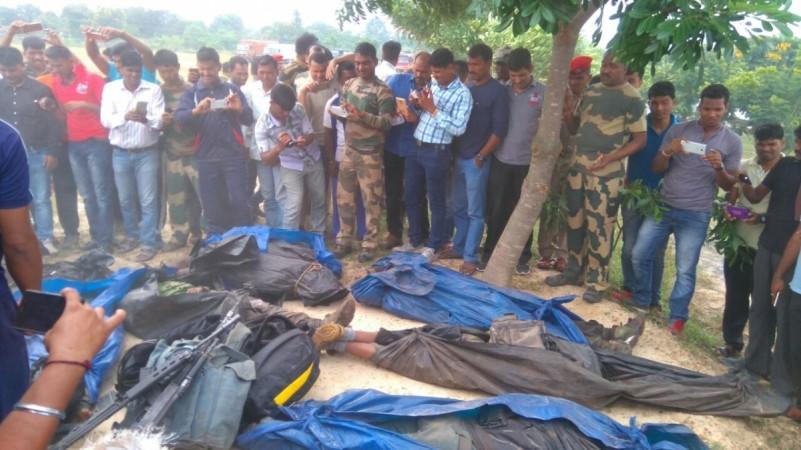
At least 30 Maoists attacked the Doikallu railway station in Rayagada district of Odisha in the early hours of Friday (March 31), leaving behind posters that opposed the visit of Prime Minister Narendra Modi to the state next month. Despite no one being killed, injured or abducted in the attack, the incident has raised the spectre of the Maoists gaining an upper hand in the state again.
Also read: Odisha blast by Maoists kills 7 policemen: Is Left-wing extremism rearing its head again?
The beginnings
Left-wing extremism in India started in the late 1960s in the neighbouring state of West Bengal, but gained widespread notoreity as an armed insurgency only in the 1970s. The point of origin was the village of Naxalbari, which lent the name Naxalism to the movement and Naxalite to its participants.
As the conflict between the state authorities and the Naxalites — whose aim was to get more rights for the common man and end persecution, but through a martial movement — escalated, the Central government got involved, sending the Army and paramilitary forces after them. There was bloody conflict throughout the 1970s, and the movement spread through central India after that.
Current situation in Odisha
Odisha, which shares a border with West Bengal, was one of the places where Naxalism spread to, as it evolved into a struggle for better rights for tribals. Odisha suited them, too, because a lot of the state's tribal population was not well off and struggled to overcome poverty. Since then, the state has seen occasional ebbs and flows of Maoism, and that continues to the present day.
The official website of the Odisha Police says: "There was a progressive improvement in the overall Left Wing Extremism (LWE) situation in the state in 2015. While there was a substantial improvement in the situation in districts like Jajpur, Dhenkanal, Keonjhar, Mayurbhanj, Gajapati, Ganjam, Nabarangpur, Sambalpur, Deogarh and Sundargarh and Nayagarh, the situation remained challenging in parts of Malkangiri, Koraput, Nuapada, Rayagada, Kandhamal, Kalahandi, Bolangir and Baragarh districts."
Maoist activities
Since the Maoists percieve their struggle to be against the current government and their apparent oppression, the targets of their explosions and attacks are often government buildings and constructions. They have also been known to target security forces with blasts and ambushes, which they perceive as "enforcers" of an "oppressive regime." They have also been known to kidnap government officials for ransom.
Maoists are often known to take cover among the civilian populace in villages and tribal areas in the state — especially in areas where they have managed to win the sympathies of locals. They are also known to seek shelter in such people's homes when the security forces come for them. When that does not work, they often cross into neighbouring states.
Current threat
The Maoists in Odisha have not shown any great activity in recent times, although they have carried out some abductions and blasts this year. For example, they killed seven policemen in an attack along the Odisha-Andhra Pradesh border in early February, and later in the month attacked a BSF camp and set a contractor camp and some equipment on fire.
Friday's attack, however, carried the portent of a much larger threat. The threat was against Prime Minister Narendra Modi himself, and there can hardly be a bigger target in India if the Maoists want to make a point. If that point is that the Naxalites are looking to tighten their grip on Odisha again, the message has been received loud and clear. It now remains to be seen how the authorities reply and how the Maoists react.





!['Lip lock, pressure, pyaar': Vidya Balan- Pratik Gandhi shine in non-judgmental infidelity romcom Do Aur Do Pyaar [ Review]](https://data1.ibtimes.co.in/en/full/797104/lip-lock-pressure-pyaar-vidya-balan-pratik-gandhi-shine-non-judgmental-infidelity-romcom.jpg?w=220&h=138)








